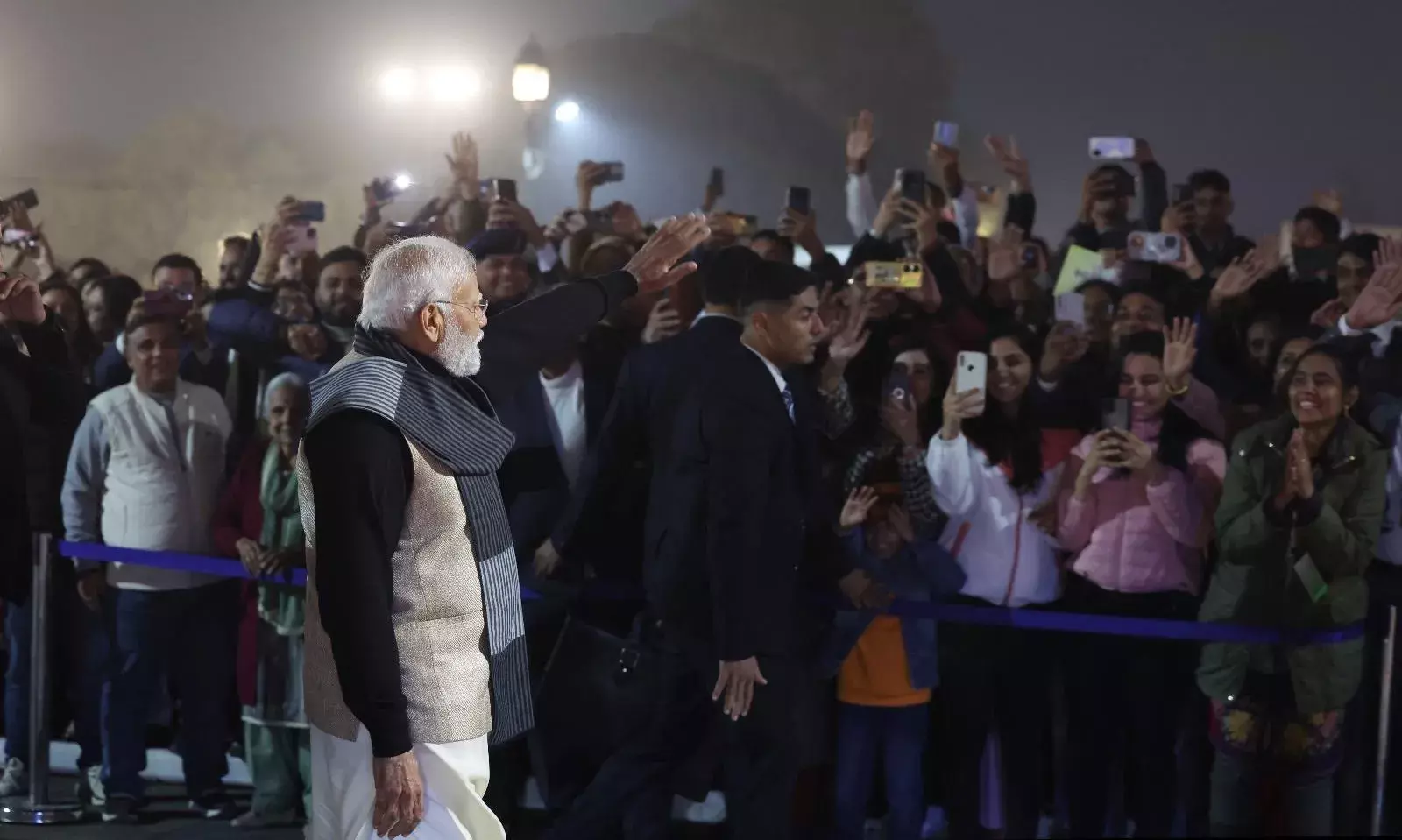Modi 2.0 budget: What can we expect from the Interim Budget?
While stopping short of making any significant recommendations, the Interim Budget could see the government particularly focus on women, the poor, farmers and youth;

Source: X
New Delhi, Jan 31: When the world’s fastest-growing major economy’s first full-time woman Finance Minister Nirmala Sitharaman pulls out her now famous tablet PC from her bahi khata (ledger) pouch to present the Interim Budget on February 1, Prime Minister Narendra Modi-led National Democratic Alliance (NDA) government is expected to reiterate its focus on controlling the budget deficit and social welfare.
“The most important thing to watch out for is how the government achieves fiscal consolidation to reduce the deficit. Second will be their assumption on growth because, on the fiscal part, the government has been highly conservative,” Dharmakirti Joshi, Chief Economist at the country’s leading analytics firm CRISIL, told The Assam Tribune.
The Interim Budget is presented by a government either going through a transition period or in its last year in office to manage the country’s spending requirements until a new dispensation takes charge. While it allows little room for any significant policy changes, a similar exercise by then Finance Minister Piyush Goyal ahead of the 2019 polls resulted in several notable announcements.
These included schemes for direct benefit transfers to farmers through the Pradhan Mantri Kisan Samman Nidhi (PM-KISAN), the creation of the Department of Fisheries, a credit card for farmers, improving the bovine resource through sustainable genetic interventions under the Rashtriya Gokul Mission, pension for workers in the unorganised sector, expanded allocation for the Indian Railways and income tax exemption for those earning up to Rs 5 lakh per annum.
Commentators said that something similar could be expected on Thursday.
“The finance minister in a press release has indicated that the forthcoming budget would probably be concentrating on women, the poor, farmers and youth as the [key] focus areas,” pointed out Aarti Raote, Partner at the advisory Deloitte India.
CRSIL’s Joshi said the announcements would subsequently be incorporated into the Union Budget to be presented after the general elections.
“Since it’s an interim budget they can’t do much. But there might be some announcements on the rural welfare and the manufacturing sector.”
State of the Macro Economy
While the government is expected to meet its budgeted fiscal deficit target of 5.9 per cent of the gross domestic product (GDP) for FY2024, the debt GDP ratio and the fiscal deficit GDP ratio will remain well above their Fiscal Responsibility and Budget Management (FRBM) benchmarks of 40 per cent and 3 per cent, respectively, global consultancy EY said in a presentation prepared by internal analysts.
The EY document added that nominal growth might be in the 9-9.5 per cent range in the current financial year considering implicit price deflator for internal consumption or IPD inflation of 2-2.5 per cent, which is lower than the projected budgeted nominal growth of 10.5 per cent.
Amid a subdued performance by a sluggish global economy, “India is expected to clock a 7 per cent growth in FY2024 led by its resilient domestic demand”, the presentation held.
Tax Sops for Middle Class Unlikely
Despite the government having introduced optional tax slabs under the old and new regime categories since 2020, India’s 432 million-strong middle class’s long wait for an enhancement in the income tax limit under Section 80C of the Income Tax Act may remain unfulfilled this time as well. It is the most popular deduction among middle class taxpayers for reducing their tax liability through investments in tax-saving instruments or incurring eligible expenses on their consolidated income and was last revised to Rs 1.5 lakh from Rs 1 lakh in 2014.
“One shouldn’t expect big sops to them; there has been much talk about it, but then we haven’t seen anything so far. There could, however, be special benefits for the lower income categories,” opined Joshi.
Counted among his major constituencies, it is this aspirational class that propelled Prime Minister Modi to power with a full majority for the first time in 30 years in May 2014.
But some anticipate a marginal tinkering in income tax rates this time.
“Given that it is an interim budget popular announcements would be difficult but the middle class could expect administrative reliefs and measures that ease compliances,” added Deloitte’s Raote.
Meanwhile, the Modi government’s welfare schemes, such as the Jan Dhan Yojana, have brought nearly 500 million people into the banking system and have resulted in 415 million exiting extreme poverty within 15 years, according to a 2023 report for the multilateral lending agency, the International Monetary Fund (IMF).
This has resulted in creating a new class of beneficiaries that have progressively endorsed Modi’s Bhartiya Janta Party (BJP) and its NDA allies in national and state assembly elections held in the last ten years.

